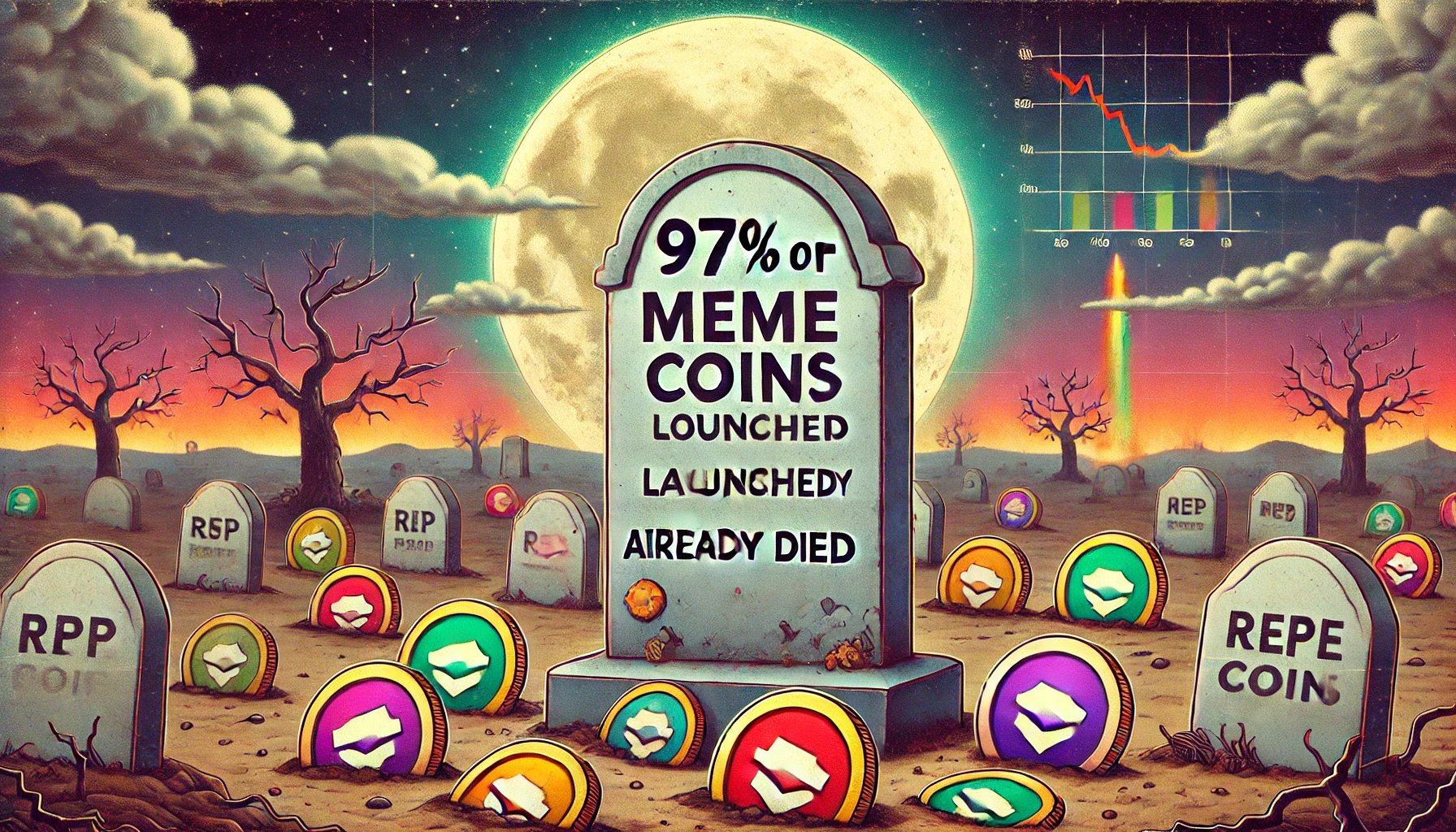Table of Contents

On Wednesday (08/07), the analysis firm Chainplay released the report “ State of Memecoin 2024”. According to the survey, 2,020 meme coin projects die every month, on average. This extinction rate exceeds the creation of new projects.
Furthermore, a total of 97% of meme coins launched have already died as of this year. Therefore, according to the report, the research findings highlight the “precarious nature” of meme coin investing:
“The average lifespan of a meme coin is just one year, which is only a third of the lifespan of an average cryptocurrency project. This rapid turnover highlights the speculative and often short-lived nature of meme coins, making them a risky investment choice.”
However, despite the risk, meme coins remain a popular investment. After all, 60% of meme coin investors view them as a short-term investment, according to the study.
Base is the network where the most meme coins die
The study also explains the criteria used to consider that a meme coin has ceased to exist. For example, it takes into account scenarios where the market capitalization is below $1,000 and the liquidity pool is below $50,000. It also considers whether the website is down and the X account has become inactive.
Furthermore, according to the report, Base is the platform where the most meme coins die, with a 66.91% death rate. Base is a second layer of Ethereum developed by the Coinbase exchange. Next comes the Solana network, with a rate of 54.03%. Finally, Ethereum has a meme coin death rate of 36.59%.
As the report explains, this data shows that instability is prevalent across multiple platforms, even if some of them are more prone to higher failure rates.
Half of the meme coins are malicious
The report also shows how this market is severely affected by fraudulent activities. After all, 55.24% of all meme coins were found to be malicious, according to the study. In fact, Base is also the platform with the highest rate of malicious meme coins, at 59.15%. Next comes Ethereum, at 55.59%, and Solana, at 51.87%.
Finally, 28% of investors have reported losses due to fraudulent meme coins. Therefore, according to the report, there is a “critical need for due diligence” in the market. This is a process of investigating a business opportunity that an investor must accept to assess the risks of a transaction.
Therefore, the study argues for the importance of rigorous research into the meme coin market. For example, audit reports have proven effective. After all, 81% of them can correctly predict whether a meme coin will turn out to be a scam.
Most investors consider memecoins dispensable
Despite the risks and high volatility, meme coins are firmly established in many investors’ portfolios. After all, two-thirds of crypto investors have already invested in meme coins. Therefore, according to the report:
“This widespread adoption indicates substantial belief in the potential for high returns despite known risks.”
However, perceptions of meme coins vary significantly across different investor groups. For example, 54% of all meme coin investors do not consider them essential to their portfolios.
On the other hand, 58% of new investors (almost 6 in 10) see this crypto asset as crucial. The study considers “new” investors to be those who have been in the market for less than six months.
Meanwhile, only a third of investors who have been in the market for more than a year see meme coins as indispensable. Finally, the media’s stance on memecoins is predominantly cautious. After all, only 13.77% of news stories about them are optimistic, which reflects widespread skepticism, according to the study.
Study methodology
According to the report, the study focused on three blockchain platforms: Solana, Ethereum, and Base.
Additionally, it used a list of 30,000 cryptocurrencies from Dexscreener. As for identifying malicious meme coins, the study referenced statistics from Dextool.
Chainplay used three metrics: locked liquidity, verified contracts, and pot of gold. Therefore, failing any of these metrics would have deemed the meme coin malicious.
- CryptoQuant Analyst: Bitcoin Nowhere Near Its Peak – Buckle Up, Hodlers! - December 21, 2024
- Chainalysis: $2.2 Billion Lost to Crypto Hacks in 2024 - December 21, 2024
- Bank of Japan leaves interest rate unchanged: Impact on the macroeconomy and the crypto market - December 20, 2024
























